World Class Textile Producer with Impeccable Quality
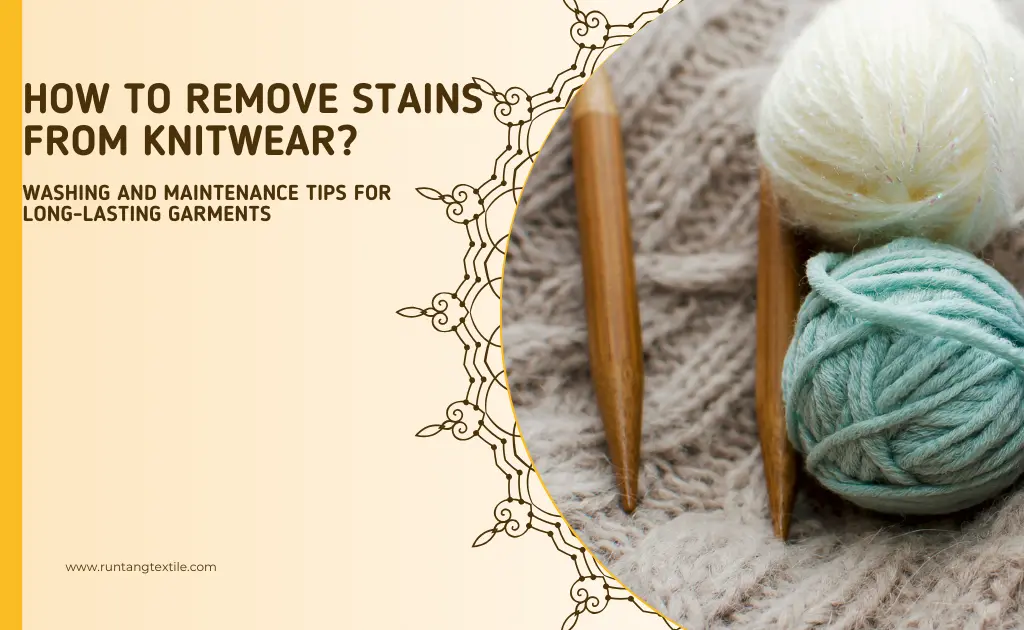
World Class Textile Producer with Impeccable Quality

Knit fabric, being a popular choice in everyday life, provide comfort, flexibility, and softness. From cozy sweaters to elegant dresses, knit fabrics are no short of importance. Since knits are well-structured by interloping yarns, these yarns provide stretchy features. Besides, knits need special care to maintain their shape and quality. With maintaining a few guidelines, knit garments can be transformed into new and long-lasting materials.
Knit fabric refers to the textile made in the process of inter-looping yarns. This structure ensures stretchiness and softness. This fabric is not the result of weaving sets of yarns.
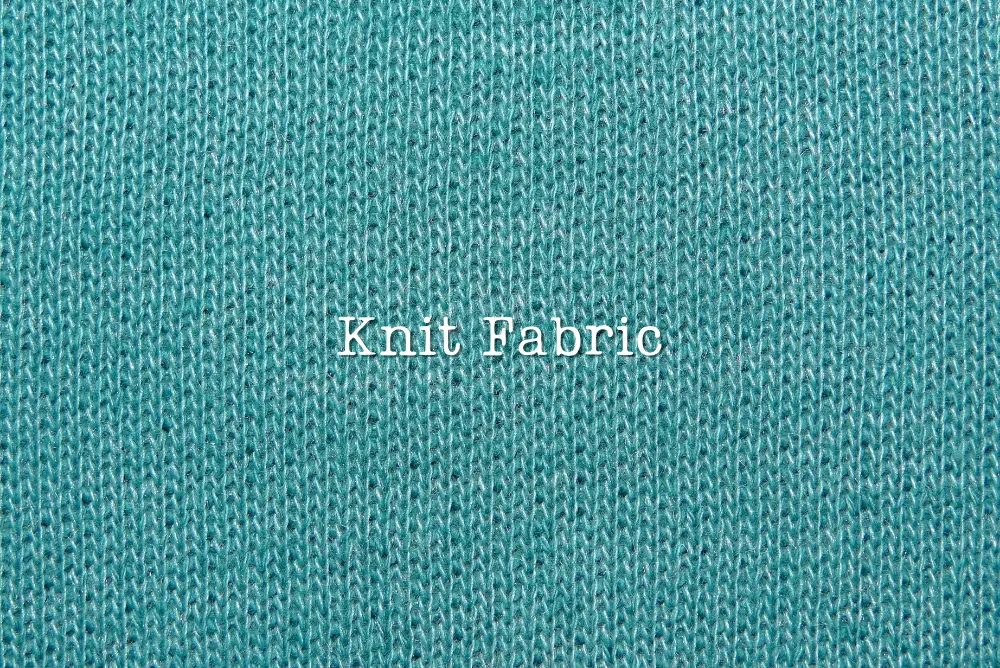
Instead, knits are created from a single continuous yarn. The knitting process creates a stretchy fabric that is easily movable with the body. Hence, knit fabric is an ideal material for making apparel items, for instance, t-shirts, sweaters, leggings, and activewear.
Knit fabric or knit garment can be made of a variety ranges of fibers. Fibers can be both natural and synthetic. Among natural fibers, there are cotton, wool, and silk. On the other hand, synthetic fibers include polyester, acrylic, and blended fibers. A small amount of spandex can add elasticity and allow the fabric to stretch. Because of spandex, knitwear can recover its shape even after pulling. Flexibility is essential and elastane helps to ensure that for activewear.
There are two primary types of knitwear. For instance:
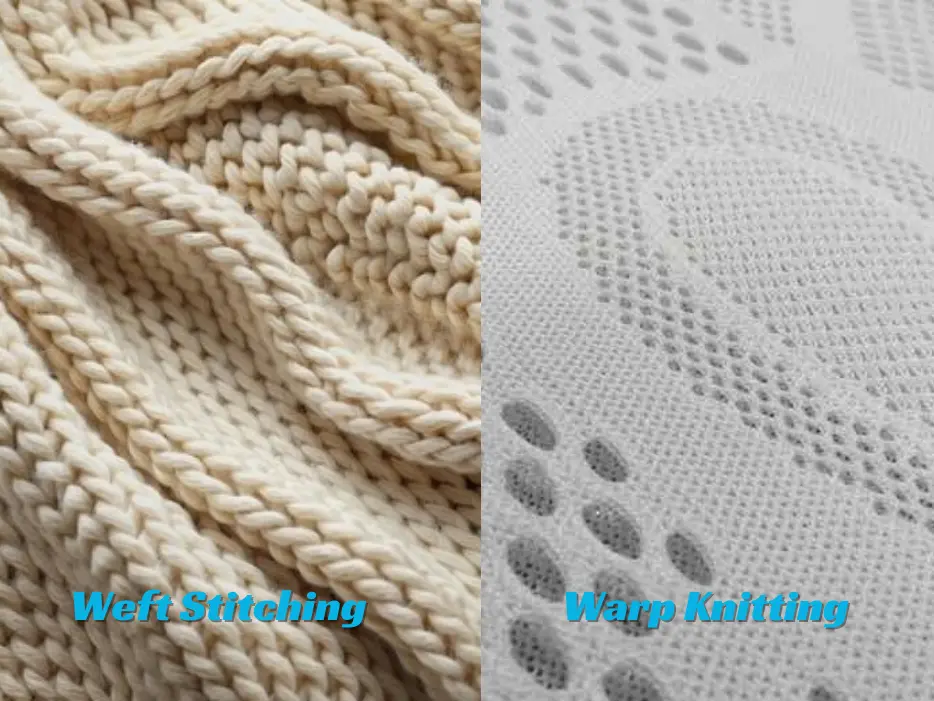
Before stepping into the fabric care guideline, it becomes necessary to understand the properties of knit fabric. Properties are beneficial as different knit fabric types respond differently. They prevent damage, enhance longevity, and improve comfort.
| Fabric Name | Knit Fabric |
| Manufacturing Materials | Natural and Synthetic Fibers |
| Fabric Durability | Moderate; depends on the material used. |
| Fabric Breathability | High |
| Stretchability | Moderate |
| Fabric Shine | Soft Look |
| Fabric Drape Ability | Moderate |
| Heat Retention Ability | Moderate |
| Prone to Bubbling | Can pill over time |
| Washing Temperature | Both warm and cold water |
| Applicable for | T-shirts, baby clothing, and outerwear. |
It is essential to understand the knit fabric as a whole and its different types with separate characteristics. For instance:
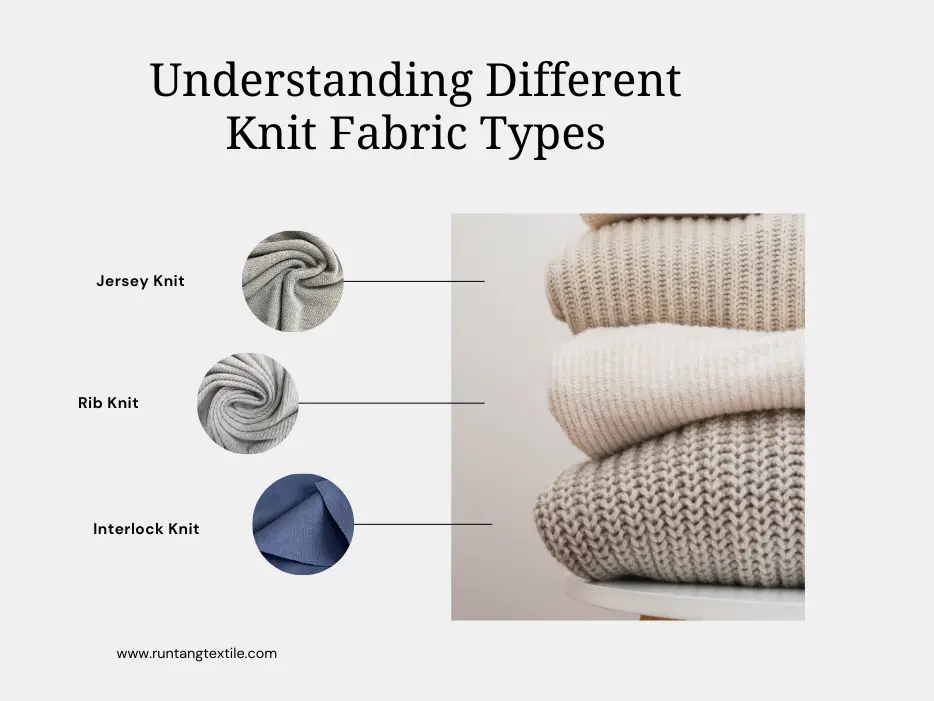
Taking care of knit fabrics requires proper washing, drying, ironing, and storing techniques. Here is the complete guideline of knit fabric care given below:
Knit garments are sensitive to heat and harsh chemicals. Hence, using the correct washing technique can maintain the integrity of the fabric. Before going to the washing method, here are the pre-washing steps to follow:
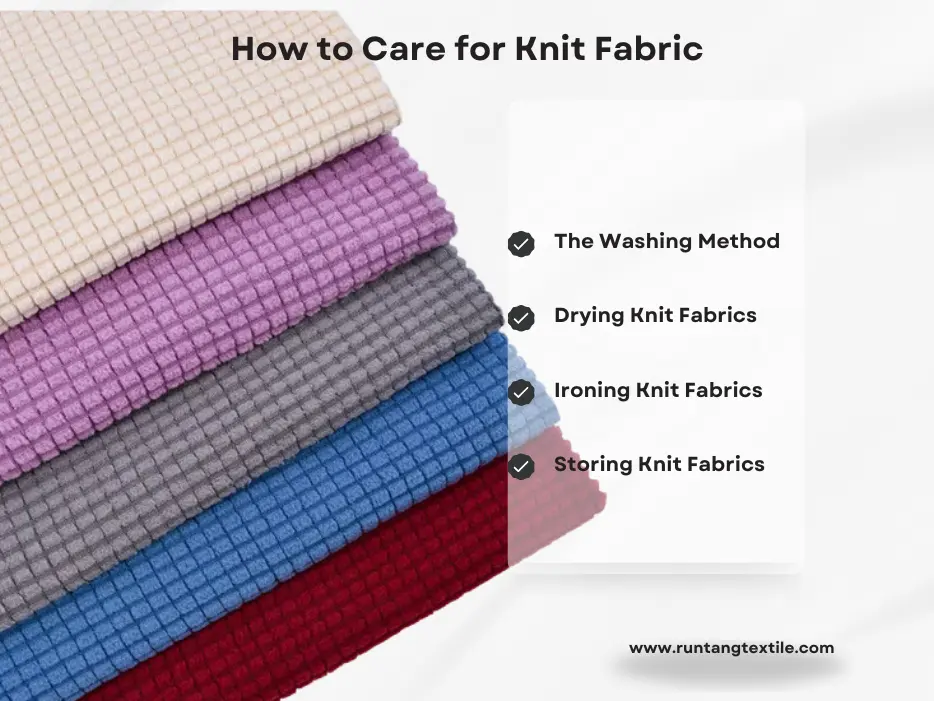
The washing method depends on the fabric type and the construction of the garment. Here are two available washing methods to follow:
To dry knit fabrics, one should avoid using high heat from a dryer. It is also essential to read the garment label whether it follows air dry or no heat setting. Heat exposure can fade colors and weaken fibers.
Knit fabrics hard require ironing. The reason is they are as stretchy as fabric. To avoid wrinkles, ironing can help. While ironing, it is essential to reverse the side of knit fabrics.
Storing is essential as it can extend the life of knit garments. It is preferable to fold heavy knits, for instance, sweaters, scarves, and thick-knit garments. At the same time, hanging lightweight knits like t-shirts can be one of the storage options, too. To avoid sunlight, one should store knit garments in a cool and dry place. Besides, store delicate knits to prevent moths from being attracted to natural fiber-made knits.
To ensure knit garments remain in excellent condition, one should follow do’s and don’t’s guidelines. These are outlined in the following:
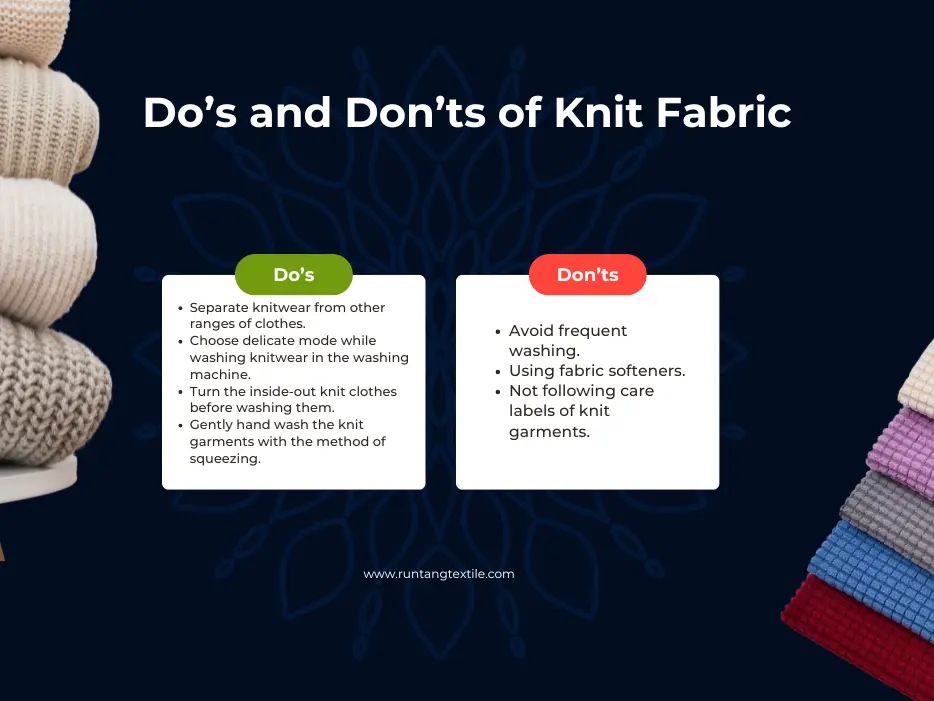
There are some common knit fabric care issues that almost everyone faces. Here are some of the FAQs that come across with given solutions:
Knits are indeed durable. At the same time, knits can be prone to pilling or snagging as well. To reduce the pain of knitwear, it is essential to limit friction. Hence, while washing the knitwear, one should use mesh bags to keep the garment safe.
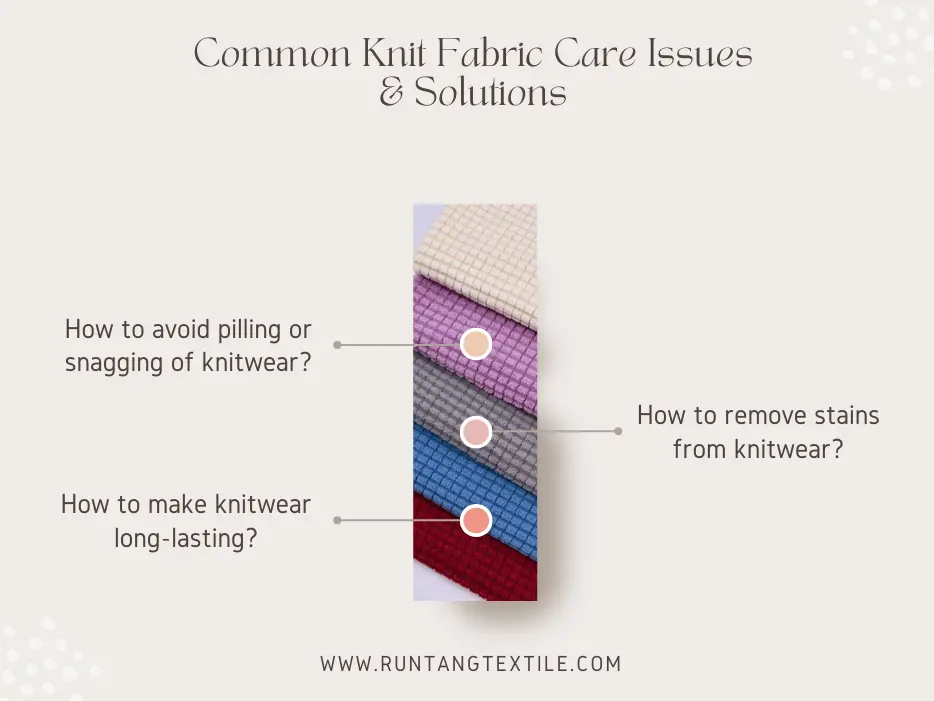
To ensure your knitwear remains long-lasting, you must focus on a couple of things. For instance, gentle washing and careful storage. Following the care label instructions on knitwear will keep you ahead with specific guidelines. Still, hand wash the knitwear if possible. Using mild detergent and avoiding the dryer can maintain the durable form.
Spot cleaning is a method to remove stains without using the entire garment. When spot cleaning, use a clean cloth. Do not rub, instead, dab the area to avoid the spreading of the stain. Applying a small amount of mild detergent can remove stains more clearly. Rinse the spot with clean water and air dry the garment.
To care for knit fabric, one does not need to follow a proper guideline or thinof k it as a chore. The focus should be on understanding the unique needs and adopting practices. From washing and drying practices to storing them correctly, one can enjoy knitwear for thousands of seasons to come. Each type of knit fabric has itown s guidelines to follow. Hence, paying close attention to maintaining softness and durability should be the ultimate aim.